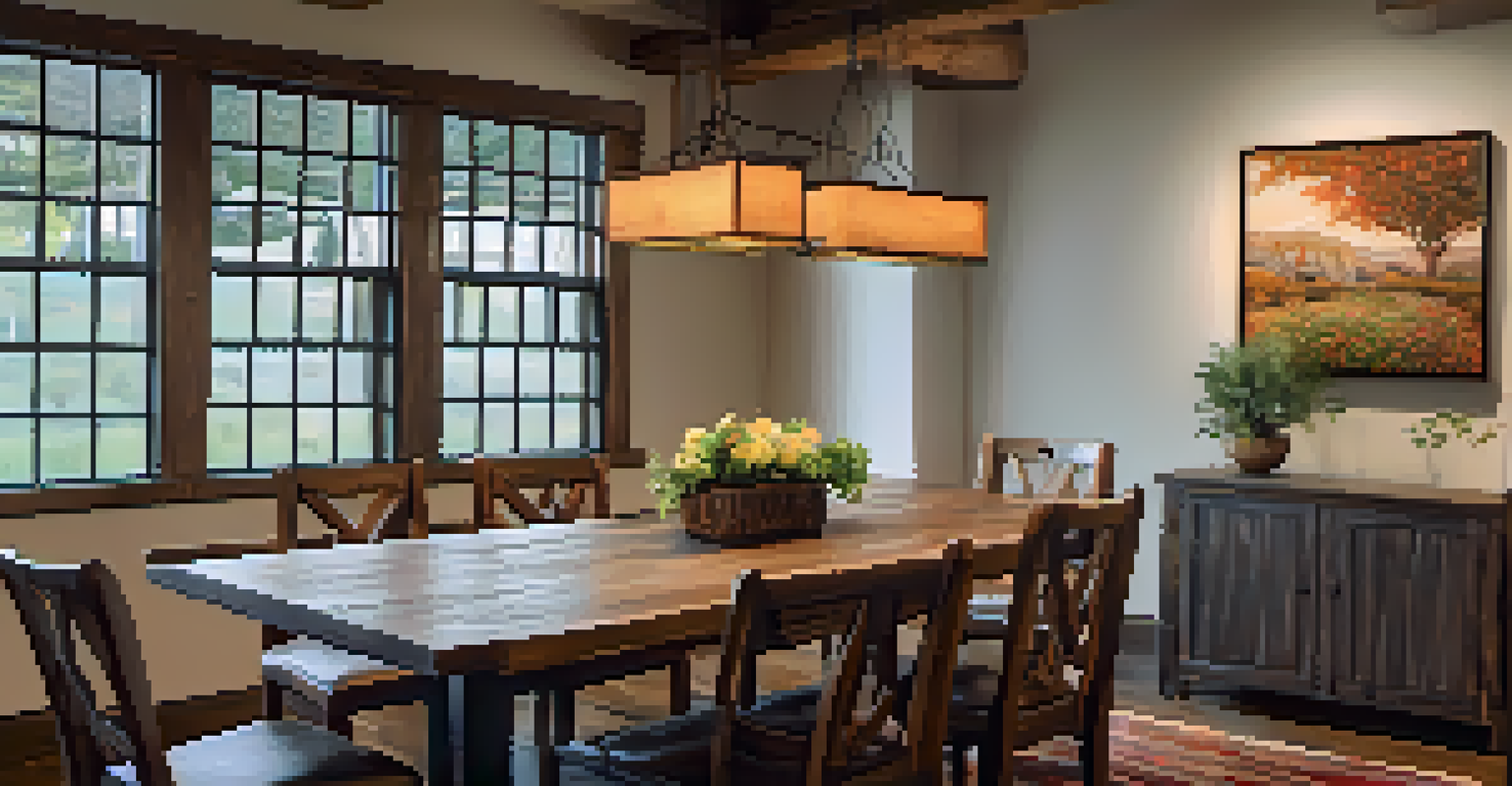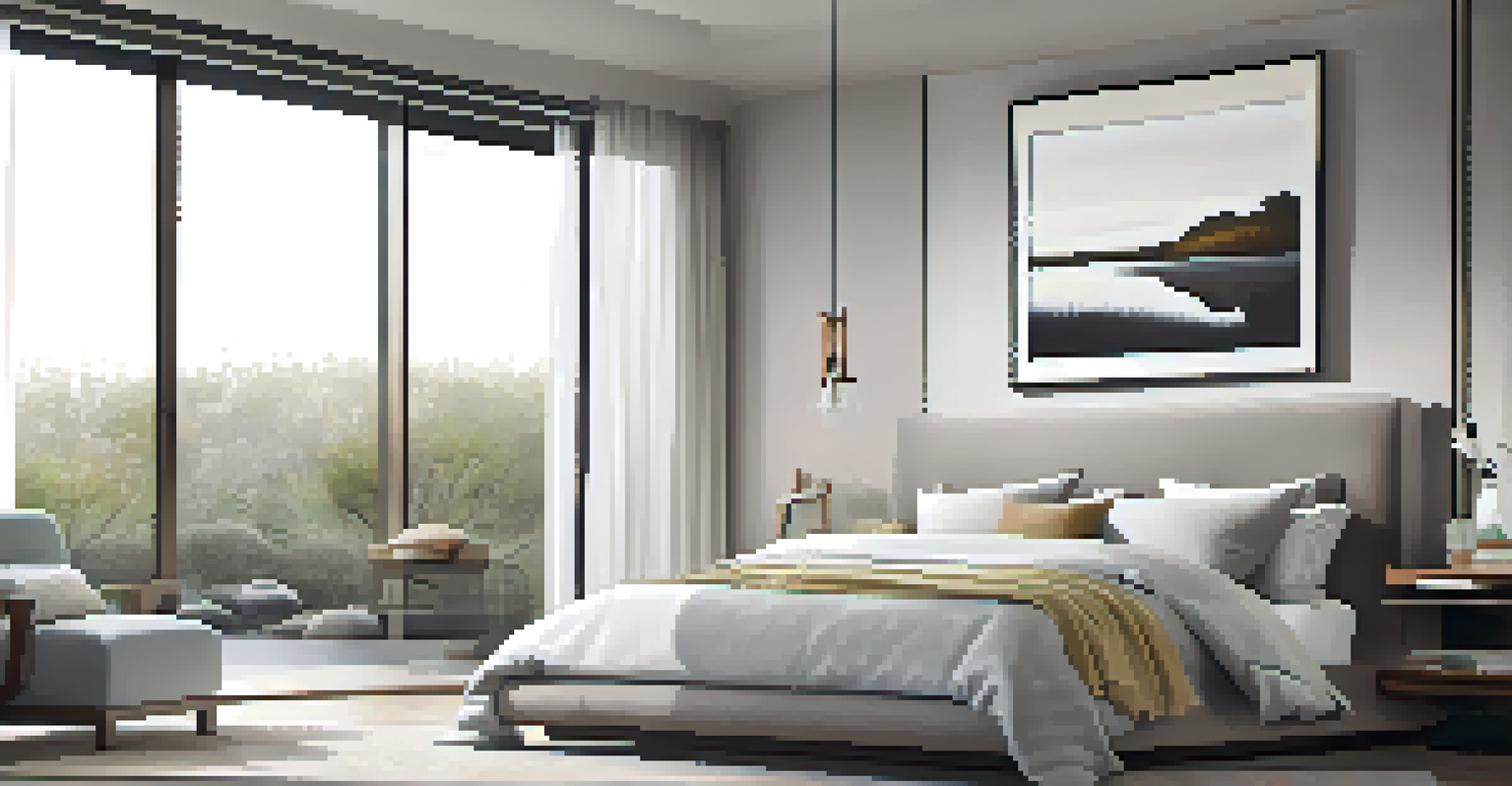Art and Decor: How to Choose the Right Pieces for Staging

Understanding the Purpose of Staging
Staging is all about creating an inviting atmosphere that resonates with potential buyers. The right art and decor can evoke emotions and help visitors imagine themselves in the space. Think of staging as setting the scene for a play, where each piece of decor plays a role in the overall narrative.
Home staging is about creating a feeling that entices potential buyers to make an emotional connection with a home.
When you stage a home, your goal is to make it feel warm and welcoming. This involves decluttering, rearranging furniture, and selecting art pieces that enhance the space. Just like a well-crafted story, staging needs engaging elements that capture attention and spark interest.
Ultimately, the art and decor choices should align with the lifestyle you want to portray. Whether it’s modern minimalism or cozy traditionalism, each decision contributes to the story you’re telling potential buyers.
Identifying Your Target Audience
Before you start selecting art and decor, it’s crucial to identify who your potential buyers are. Understanding their preferences can guide your choices effectively. For instance, a young couple may appreciate contemporary art, while a family might prefer playful and vibrant decor.

Consider the demographics of your target market. Are they professionals, families, or retirees? Each group will respond to different styles, so tailoring your staging to suit their tastes can make all the difference. It’s like choosing the right book for your reader; the more personalized it is, the more engaging it becomes.
Staging Creates Emotional Connections
An inviting atmosphere through art and decor helps potential buyers envision themselves in the space.
Once you have a clear picture of your audience, you can curate your art and decor selections to resonate with them. This strategic approach will not only enhance the appeal of the space but also increase the chances of a sale.
Choosing the Right Color Palette
Color plays a significant role in how a space feels and looks. Selecting a cohesive color palette can unify your decor and create a harmonious environment. Think of colors as the mood setters; soft blues and greens can evoke calmness, while warm reds and yellows add energy.
The best rooms have something to say about the people who live in them.
When staging, aim for neutral backgrounds that allow art pieces to stand out without overwhelming the senses. This approach helps potential buyers envision their own style in the space. Just like a well-prepared meal, the right balance of flavors (or colors) makes everything more enjoyable.
Additionally, consider how lighting will affect your chosen colors. Natural light can shift the appearance of hues, so test your color selections in different lighting conditions to ensure they evoke the desired ambiance.
Selecting Art Pieces That Inspire Emotion
Art should tell a story and evoke feelings that resonate with your audience. When selecting pieces, consider how they reflect the lifestyle you want to showcase. For instance, a serene landscape may appeal to buyers seeking tranquility, while abstract art might attract those who appreciate modern aesthetics.
Aim for a balance of art styles and sizes to create visual interest. Large statement pieces can anchor a room, while smaller works can fill in gaps without overwhelming the space. Think of your walls as a canvas where each piece contributes to the overall masterpiece.
Know Your Target Audience
Understanding the preferences of potential buyers allows for tailored art and decor choices that enhance appeal.
Finally, don’t forget to consider the placement of your art. Hanging pieces at eye level creates an inviting atmosphere and encourages viewers to engage with the artwork, further enhancing their emotional connection to the home.
Incorporating Personal Touches with Decor
While staging is about creating a broad appeal, incorporating personal touches can make a space feel more inviting. Unique decor pieces, such as handmade items or local art, can add character and warmth. This personal touch can differentiate your staging from others, making it memorable.
However, it’s essential to strike a balance. Too many personal items can distract potential buyers, so choose wisely. Think of it as seasoning a dish; a little can enhance the flavor, but too much can overpower it.
By thoughtfully selecting decor that reflects the home’s personality, you can create an inviting atmosphere that encourages buyers to envision themselves living there. It’s about making the space feel like a home rather than just a house.
Utilizing Space Effectively with Layouts
The layout of your staging can significantly impact how art and decor are perceived. Arrange furniture and decor to create a natural flow, guiding visitors through the space. This layout should not only be functional but also enhance the visual appeal of your art pieces.
Consider the scale of your furniture and decor in relation to the room size. Overly large items in a small space can feel cramped, while tiny pieces in a large room may get lost. It’s much like dressing for an occasion; you want to look appropriate for the setting.
Effective Layout Enhances Flow
A well-arranged layout guides visitors through the space, creating a natural flow that fosters emotional connections.
By keeping the layout open and inviting, you allow potential buyers to envision themselves moving through the space easily. This seamless experience can help them form an emotional connection to the home.
Accessorizing for Impact and Cohesion
Accessories can tie a space together and enhance the overall aesthetic. Items like throw pillows, vases, and decorative trays can add layers of texture and color. Think of them as the finishing touches that complete a beautifully set table.
When selecting accessories, aim for a cohesive look that complements your chosen art and decor. Mixing different materials and styles can create visual interest, but be sure to maintain a sense of harmony. It’s much like creating a playlist; the songs should flow together while still offering variety.

Finally, don't overcrowd surfaces with too many accessories. A few well-placed items can make a stronger impact than cluttered spaces. Emphasizing simplicity will help potential buyers focus on the beauty of the home.